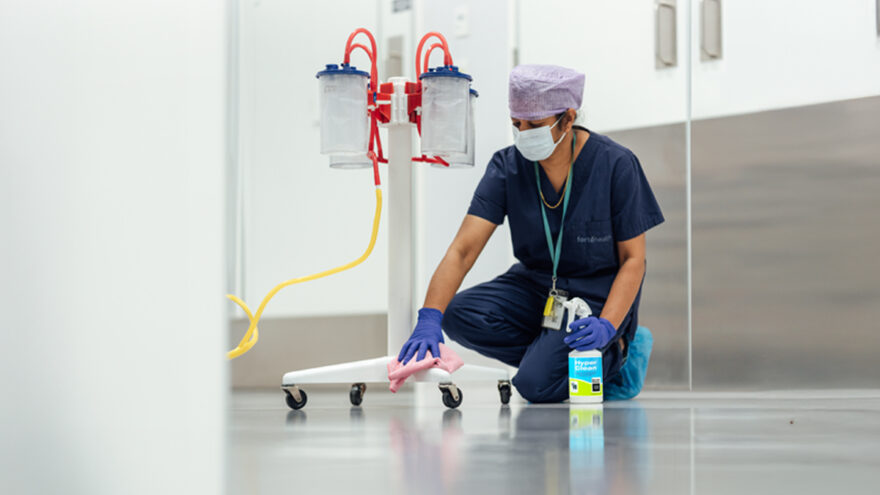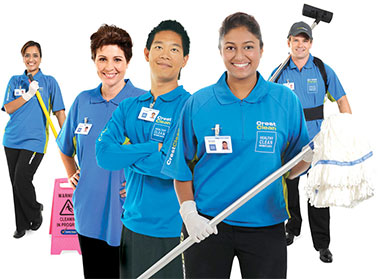Mastering infection control in healthcare cleaning

Liezl Foxcroft, General Manager of the Master Cleaners Training Institute, recently attended the “Mastering Infection Control in Cleaning” webinar, presented by Cleanlink. The session highlighted critical aspects of infection control that align with CrestClean’s commitment to hygienic cleaning in healthcare facilities.
Tragically the speaker, Darrel Hicks, was sharing from personal experience having lost his daughter-in-law to a healthcare-acquired infection. Darrel’s story emphasises the real-world impact of cleaning practices in hospitals, reminding us that there are no shortcuts when it comes to cleanliness in healthcare facilities.
The introduction to the webinar was focused on “Dry Surface Biofilm – The Unseen Threat”. It highlighted the hidden dangers that cleaning professionals face, emphasising the importance of understanding dry surface biofilms (DSBs) and adjusting infection prevention protocols accordingly. These biofilms protect harmful organisms from disinfection efforts, making them difficult to eradicate, especially in public spaces. Traditional disinfectants may kill surface microorganisms, but DSBs act as a “life raft,” providing protection from cleaning efforts.
The webinar also explained the difference between cleaning and disinfecting a surface. While cleaning reduces the number of germs by removing them, disinfecting targets germs on surfaces after cleaning. This highlights the importance of cleaning surfaces first to ensure disinfectants can work effectively. Germs can hide under dirt and organic matter, making it imperative to clean thoroughly before applying disinfectants.
The webinar reinforced the principle that visual cleanliness does not equate to hygienic cleanliness. Just because a surface appears clean does not mean it is free of harmful pathogens. The need to shift the conversation from “clean when visibly soiled” to a more rigorous, hygienic cleaning approach was emphasised. This is aligns with CrestClean’s practice of ‘Cleaning for health’.
Current research shared during the webinar indicates that there is no significant difference in outcomes when cleaning surfaces with a dwell time of 60 seconds versus the longer, traditional 3-4 minutes. This insight challenges long-standing practices and emphasises the importance of thorough cleaning prior to disinfection. For effective infection control, bacteria must be eliminated by first removing biofilms, which provide the essential food, moisture, and oxygen that bacteria need to survive. Contrary to some theories, leaving biofilms intact is not a viable practice as it allows harmful bacteria to thrive.
Hand hygiene continues to be a paramount focus in healthcare facilities. Alarmingly, even faecal matter as small as a pinhead can contain enough pathogens to transmit serious infections like E. coli or C. difficile. Spores from C. difficile can also linger on floor surfaces for up to five months, while MRSA and S. aureus can linger for seven months. The speaker also shared the statistic that one gram of faecal matter can contain up to 1,000,000,000,000 germs (about the weight of a paperclip) – reinforcing the need for comprehensive cleaning protocols.
To achieve effective environmental hygiene, the following six steps were highlighted:
1. Use clean microfibre cloths or flat mops
2. Apply a general-purpose cleaner with a pH of 7-9 (Hydrogen Peroxide is recommended)
3. Use “elbow grease” for effective agitation
4. Pay attention to areas where pathogens are likely to settle
5. Once the surface is dry, apply a sporicidal hospital-grade disinfectant, ensuring it remains wet for 60-90 seconds
6. Rinse with clean water and wipe dry, as many disinfectants can be corrosive and leave a visible film
The webinar closed with a final and powerful message: “One well-trained, well-equipped, conscientious cleaning professional, given the proper tools and an adequate amount of time to hygienically clean a room, can prevent more infections than a room full of doctors can cure.”
At CrestClean, we are committed to implementing these essential cleaning practices to ensure the health and safety of all patients and staff in the healthcare facilities that we serve.
